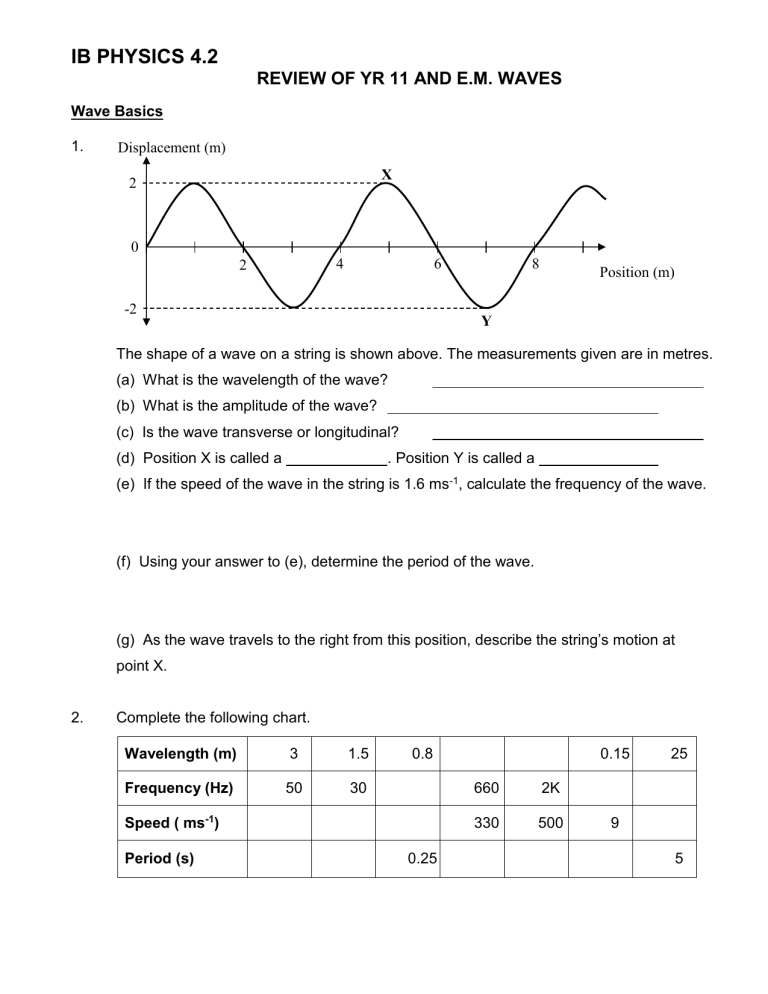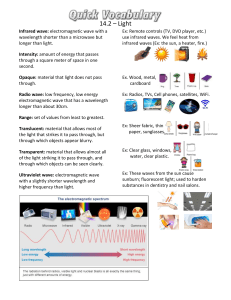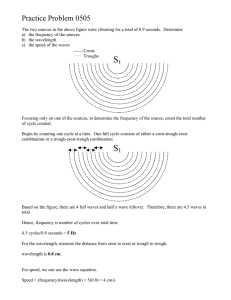
IB PHYSICS 4.2 REVIEW OF YR 11 AND E.M. WAVES Wave Basics 1. Displacement (m) X 2 0 4 2 6 -2 8 Position (m) Y The shape of a wave on a string is shown above. The measurements given are in metres. (a) What is the wavelength of the wave? (b) What is the amplitude of the wave? (c) Is the wave transverse or longitudinal? (d) Position X is called a . Position Y is called a (e) If the speed of the wave in the string is 1.6 ms-1, calculate the frequency of the wave. (f) Using your answer to (e), determine the period of the wave. (g) As the wave travels to the right from this position, describe the string’s motion at point X. 2. Complete the following chart. Wavelength (m) 3 1.5 Frequency (Hz) 50 30 0.8 Speed ( ms-1) Period (s) 0.25 0.15 660 2K 330 500 25 9 5 3. Electromagnetic waves transfer magnetic fields. They all travel at the same speed of increases, its through the medium of electric and in a vacuum which is called the . As the frequency of an electromagnetic (e.m.) wave decreases. High energy e.m. radiation has a frequency. 4. Calculate: (a) the frequency of visible light that has a wavelength 7 x 10 -7 m. ( Given that c = 3x108ms-1) (b) the wavelength of a radio station transmitting on 540 kHz. 5. Suggest uses for the following parts of the e.m. spectrum. (a) X-rays. (b) Radio waves (c) Micro waves 6. State a characteristic property of the following types of e.m. radiation. (a) Gamma rays (b) Infra red 7. The following diagram shows the wavelength range of electromagnetic radiation. Assign the correct labels to each box where its wavelength fits best. Labels: X-rays, Infra red, Radio waves, Visible light, Ultra violet light, Gamma rays, Microwaves Increasing wavelength







